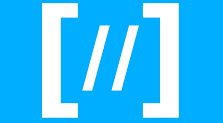Mobile Development Platforms and Architecture Patterns
 Samuel Ejalonibu
Samuel Ejalonibu
As a Software Engineer with a passion for mobile app development, I'm excited to share my knowledge of mobile development platforms and common software architecture patterns. I'll also be embarking on a new journey with the HNG Internship, focusing on the Mobile Track.
Mobile Development Platforms
Mobile development platforms provide tools and frameworks for building mobile apps. There are two main types:
Native: These require separate code for each operating system, like iOS and Android. They offer the best performance and user experience but take more time and resources to develop for both platforms. They include:
Cross Platform: These let you write code once and use it for both iOS and Android. They're faster to develop but may have slight performance drawbacks. They include:
React Native: Uses JavaScript
Flutter: Uses Dart
Xamarin: Uses C#
Software Architecture Patterns
Common software architecture patterns help structure your mobile app for better maintainability and scalability. They include:
Model-View-ViewModel (MVVM): This separates your app into three parts:
Model: Handles data and business logic.
View: Represents the user interface.
ViewModel: Acts as a bridge between the model and view, managing data presentation. MVVM is widely used for both native and cross-platform development.
Model-View-Presenter (MVP): Similar to MVVM, but the presenter handles more logic, keeping the view simpler. MVP is more common in native development.
Pros and Cons for Architecture
MVVM: This helps by separating UI, data and logic. The separation makes the app easier to understand, test and maintain. However MVVM can be steeper to learn because debugging issues with data binding can get tricky.
MVP: This provides a simpler approach making it easier to learn and faster to implement. The clear separation keeps the UI clean and promotes easier testing in isolation. However, the combination between view and logic can become a burden for maintainability as the app grows in complexity. Testing the logic can also be more challenging, and code reusability might be limited.
My Journey
With over 2 years of Mobile App development experience with flutter and currently specializing in backend development with the ALX software engineering program, I'm eager to expand my skills in mobile development. The HNG internship offers the perfect opportunity to learn from experts, work on real world projects, and push myself beyond limits.
Why I want to do the Internship
I love doing hard things and I believe that growth comes from challenging ourselves, and the HNG Internship provides the ideal environment to do so. I'm excited to learn, grow and contribute to the mobile development community.
You can also join me to partake in this wonderful experience and push yourself beyond limits. Check out the following links:
Subscribe to my newsletter
Read articles from Samuel Ejalonibu directly inside your inbox. Subscribe to the newsletter, and don't miss out.
Written by
